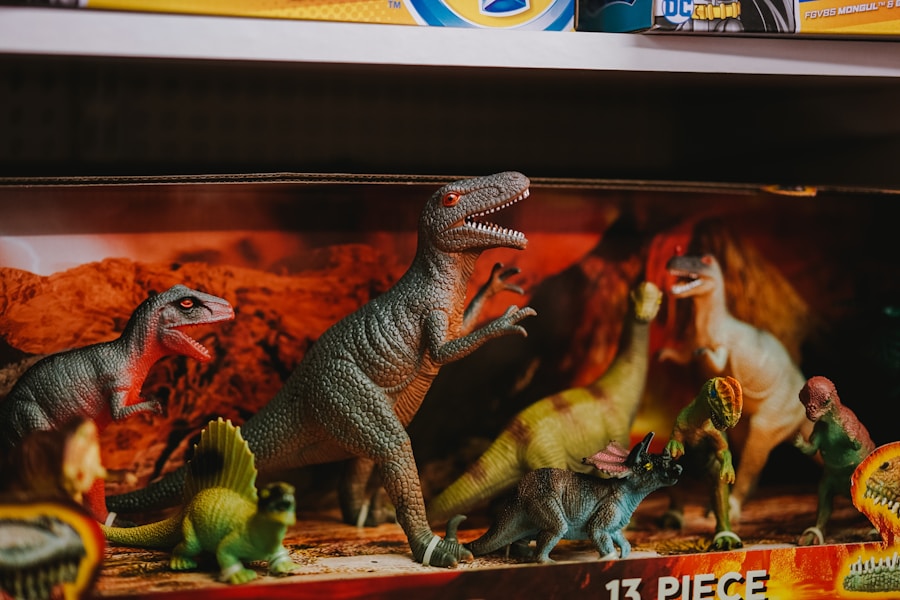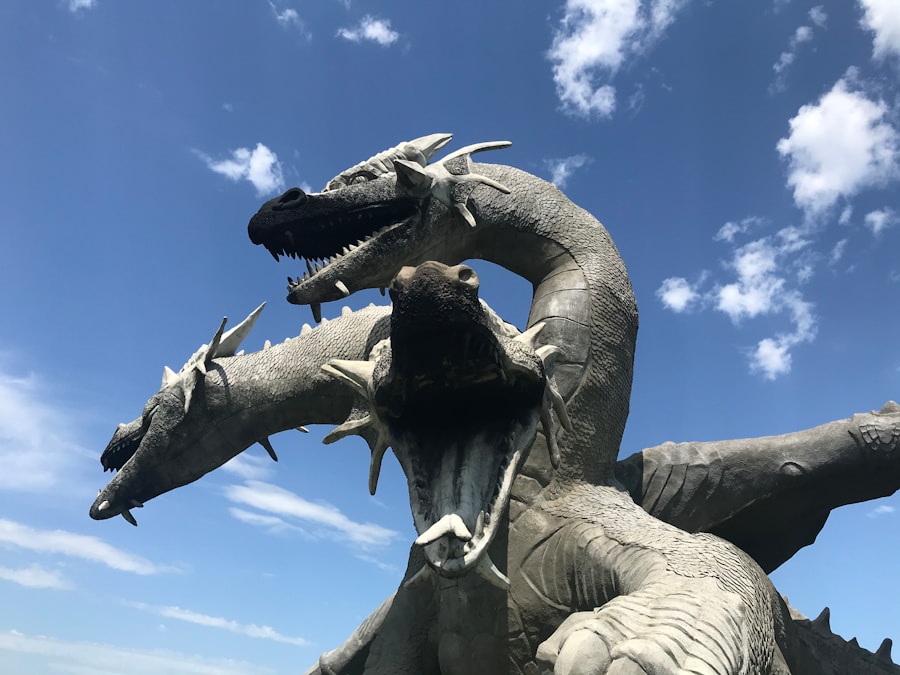Godzilla, the iconic kaiju, has become a symbol of cinematic history since his debut in the mid-20th century. This towering creature, often depicted as a monstrous force of nature, has captivated audiences around the globe with his destructive power and complex narrative. You may find it fascinating how Godzilla embodies humanity’s fears and anxieties, particularly regarding nuclear warfare and environmental destruction.
As you delve into the various iterations of this legendary monster, you will discover not only thrilling action but also profound themes that resonate with contemporary issues. The franchise has evolved significantly over the decades, adapting to changing societal contexts while maintaining its core essence. From his origins in Japan to his status as a global pop culture phenomenon, Godzilla’s journey reflects the shifting landscape of film and audience expectations.
As you explore the different films, you will notice how each version of Godzilla offers a unique perspective on the character, allowing you to appreciate the depth and versatility of this cinematic titan.
Summary
- Godzilla is a famous Japanese fictional monster that has appeared in numerous films and media since its creation in 1954.
- The original Godzilla film, released in 1954, was a black-and-white Japanese film that depicted the monster as a metaphor for nuclear weapons and the devastation they cause.
- The 1998 American adaptation of Godzilla was met with mixed reviews and criticism for its departure from the original Japanese concept.
- The 2014 Godzilla film aimed to bring the monster back to its roots, focusing on the destructive force of nature and the impact on human lives.
- Shin Godzilla, released in 2016, offered a modern take on the classic monster, with a focus on political and social commentary.
The Original Godzilla (1954)
A Poignant Commentary on the Horrors of War
Directed by Ishirō Honda, this black-and-white classic introduced audiences to a creature awakened by nuclear testing in the Pacific Ocean. The film is not merely a monster movie; it serves as a poignant commentary on the horrors of war and the devastating consequences of humanity’s technological advancements.
A Reflection of Post-War Anxieties
As you watch, you will feel the palpable tension and fear that permeates the narrative, reflecting Japan’s post-war anxieties. In this inaugural film, Godzilla is portrayed as a tragic figure rather than a mere villain. His rampage through Tokyo is not just an act of destruction; it is a manifestation of nature’s wrath against human folly.
A Profound Exploration of Guilt and Responsibility
The special effects, groundbreaking for their time, bring Godzilla to life in a way that captivates and terrifies. You may find yourself empathising with the creature as he struggles against the forces that created him, making this film a profound exploration of guilt and responsibility.
Godzilla (1998)

Fast forward to 1998, when Hollywood attempted to reimagine Godzilla for a new generation. Directed by Roland Emmerich, this version took significant liberties with the source material, presenting a more Americanised interpretation of the iconic monster. While it aimed to capture the essence of Godzilla’s destructive nature, many fans were left disappointed by the film’s departure from the original’s themes.
As you watch this iteration, you might notice how it leans heavily on special effects and action sequences rather than the deeper narrative that characterised its predecessor. Despite its shortcomings, the 1998 “Godzilla” introduced the creature to a wider audience and showcased impressive visual effects for its time. The film’s portrayal of Godzilla as a giant lizard rather than the traditional kaiju sparked debate among fans and critics alike.
You may find it interesting how this version reflects the late 90s’ fascination with blockbuster spectacles, prioritising entertainment over substance. While it may not resonate with purists, it remains an essential part of Godzilla’s cinematic legacy.
Godzilla (2014)
| Category | Metric |
|---|---|
| Release Date | May 15, 2014 |
| Director | Gareth Edwards |
| Box Office | 529 million |
| Runtime | 123 minutes |
| IMDb Rating | 6.4/10 |
In 2014, director Gareth Edwards revitalised the franchise with a more serious and grounded approach in “Godzilla.” This film marked a return to the creature’s roots, emphasising themes of nature’s power and humanity’s insignificance in the face of such overwhelming forces. As you immerse yourself in this version, you will appreciate how it balances thrilling action with character development and emotional depth. The film’s cinematography captures the scale of Godzilla’s presence, making you feel both awe and dread as he emerges from the depths.
One of the standout features of this iteration is its focus on human characters and their struggles amidst the chaos. You will find yourself invested in their stories as they navigate the devastation wrought by Godzilla and other kaiju. The film successfully builds tension, allowing you to experience moments of suspense before unleashing breathtaking action sequences.
This careful balance between human drama and monster mayhem sets “Godzilla” (2014) apart from its predecessors and re-establishes the creature as a formidable force in modern cinema.
Shin Godzilla (2016)
“Shin Godzilla,” released in 2016, represents a bold reimagining of the franchise that resonates deeply with contemporary audiences. Directed by Hideaki Anno and Shinji Higuchi, this film takes a satirical approach to Japan’s bureaucratic response to disaster while simultaneously delivering a terrifying portrayal of Godzilla. As you watch, you will notice how it critiques governmental inefficiency and highlights societal fears surrounding natural disasters and nuclear threats.
This version of Godzilla is unlike any other; he evolves throughout the film, showcasing terrifying new forms that reflect his adaptability and menace. You may find yourself captivated by the creature’s grotesque design and unsettling behaviour, which serve to amplify the film’s themes of chaos and unpredictability. “Shin Godzilla” is not just a monster movie; it is a commentary on modern society’s vulnerabilities in the face of catastrophe.
As you engage with this film, you will gain insight into Japan’s cultural psyche while experiencing heart-pounding suspense.
Godzilla: King of the Monsters (2019)

In 2019, “Godzilla: King of the Monsters” expanded upon the MonsterVerse established in previous films, bringing together iconic kaiju from across the franchise’s history. Directed by Michael Dougherty, this sequel embraces its larger-than-life premise while delving into themes of environmentalism and coexistence. As you watch, you will be treated to epic battles between Godzilla and other titans like Mothra and King Ghidorah, showcasing stunning visual effects that elevate the spectacle.
The film also explores the idea of balance within nature, suggesting that humanity must learn to coexist with these colossal beings rather than attempt to destroy them. You may find this theme particularly relevant in today’s context, where environmental concerns are at the forefront of global discourse. The character arcs add depth to the narrative, allowing you to connect with their motivations as they grapple with their roles in a world dominated by monsters.
“Godzilla: King of the Monsters” successfully combines action with meaningful commentary, making it an exhilarating addition to the franchise.
“Godzilla vs. Kong,” released in 2021, marks an exciting culmination of the MonsterVerse saga as two legendary titans clash for supremacy. Directed by Adam Wingard, this film pits Godzilla against King Kong in an epic showdown that fans had long anticipated.
As you witness their battle unfold across stunning landscapes, you will be drawn into a narrative that explores themes of power, legacy, and what it means to be a king. The film cleverly weaves together multiple storylines involving human characters who seek to understand these titans’ origins and motivations. You may find yourself invested in their quest for knowledge as they navigate a world where monsters reign supreme.
The action sequences are nothing short of spectacular, showcasing each creature’s unique abilities while maintaining a sense of scale that leaves you breathless. “Godzilla vs. Kong” is not just about two monsters fighting; it delves into their histories and relationships with humanity, adding layers to an already rich narrative tapestry.
Which Godzilla to Watch First?
With so many iterations of Godzilla available, deciding where to start can be daunting. If you’re looking for a deep exploration of themes like nuclear anxiety and environmentalism, beginning with the original 1954 “Godzilla” or “Shin Godzilla” (2016) would be ideal choices. These films offer profound insights into societal fears while delivering thrilling monster action.
For those seeking a more modern blockbuster experience with stunning visuals and epic battles, “Godzilla” (2014) or “Godzilla: King of the Monsters” (2019) would be excellent starting points. If you’re intrigued by crossovers and want to see two iconic monsters face off, “Godzilla vs. Kong” (2021) is sure to satisfy your craving for action-packed entertainment.
Ultimately, your choice depends on what aspects of storytelling resonate with you most—be it character-driven narratives or grand spectacles filled with monster mayhem. Regardless of where you begin your journey into the world of Godzilla, you’re sure to encounter thrilling adventures that reflect both humanity’s fears and hopes for the future.
